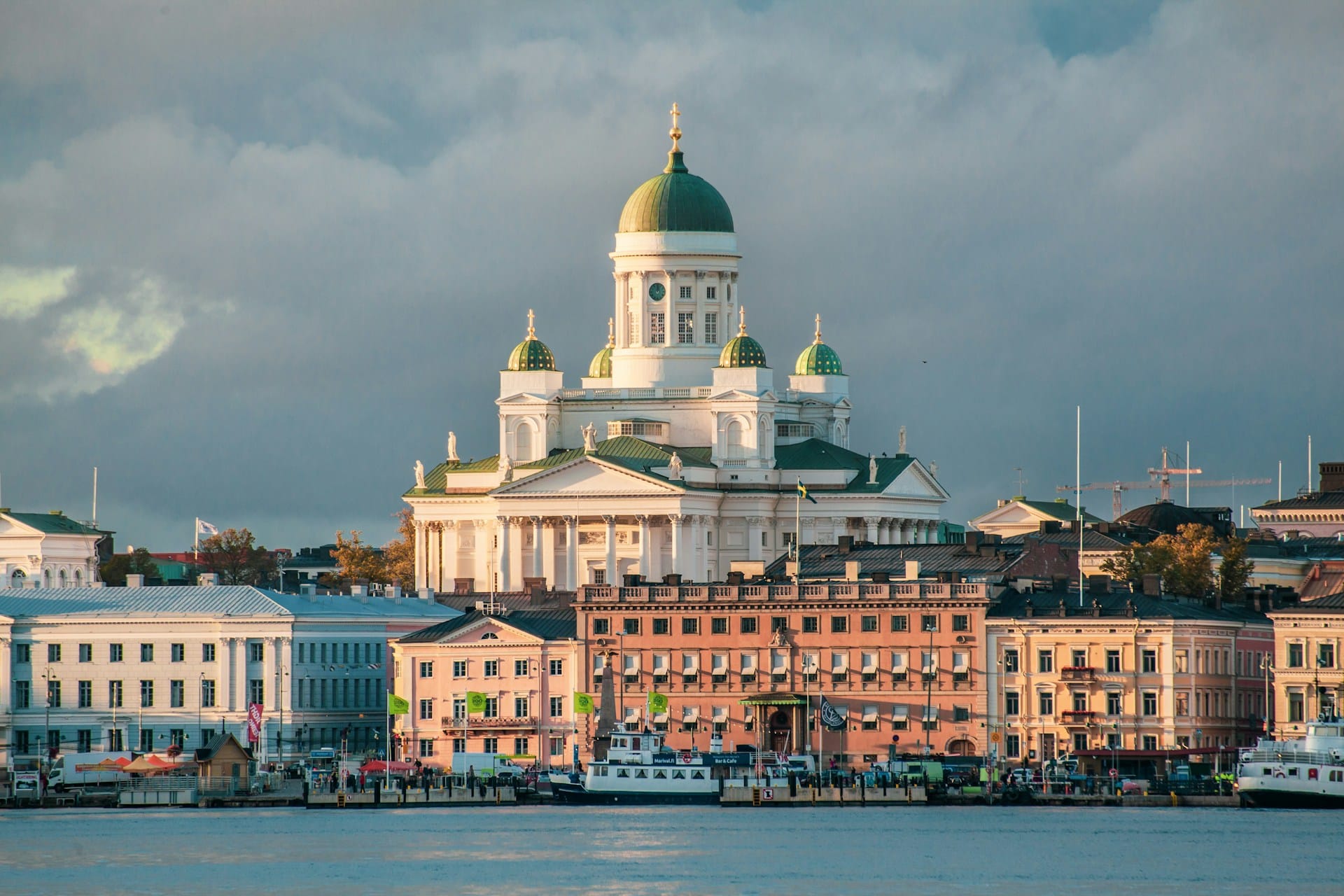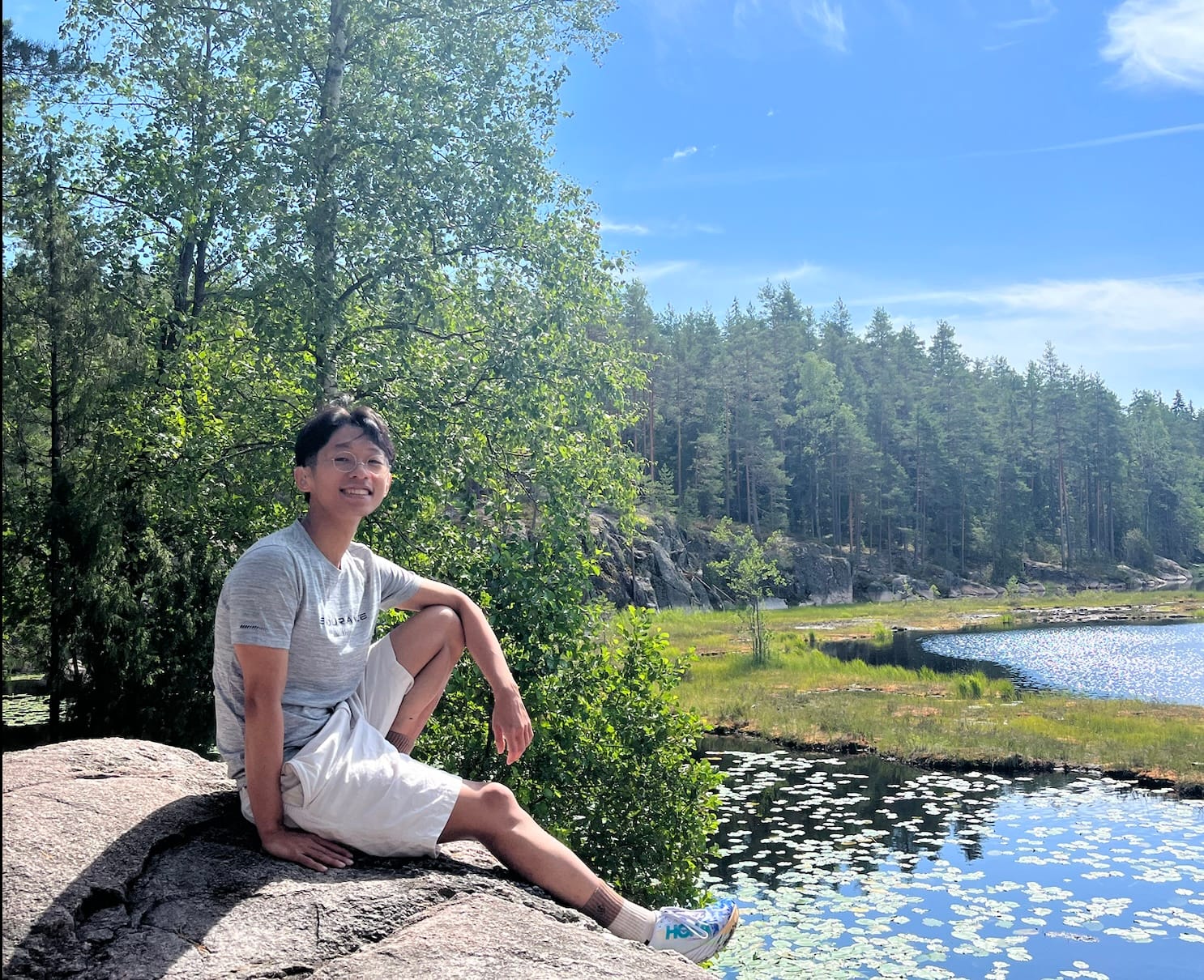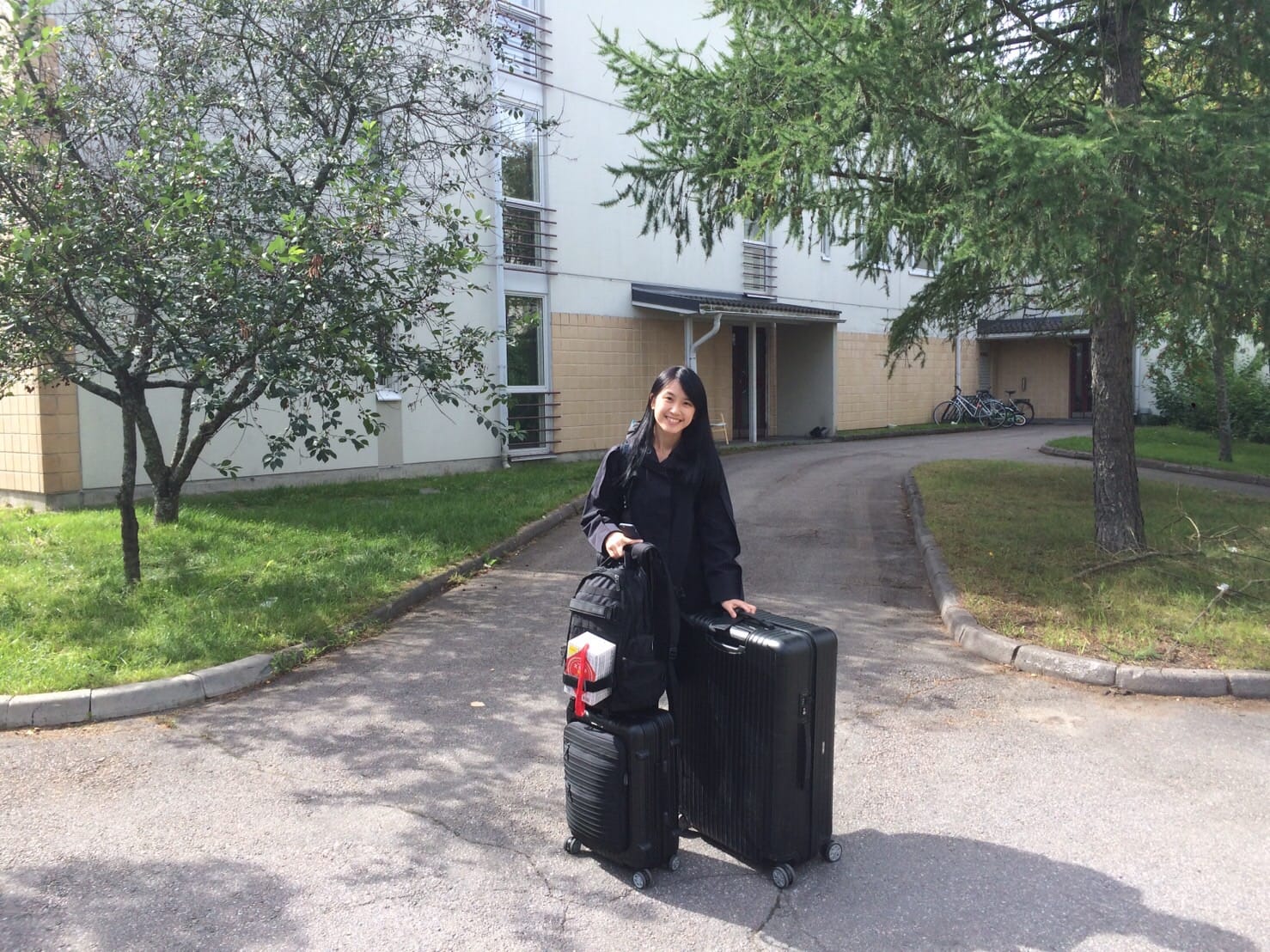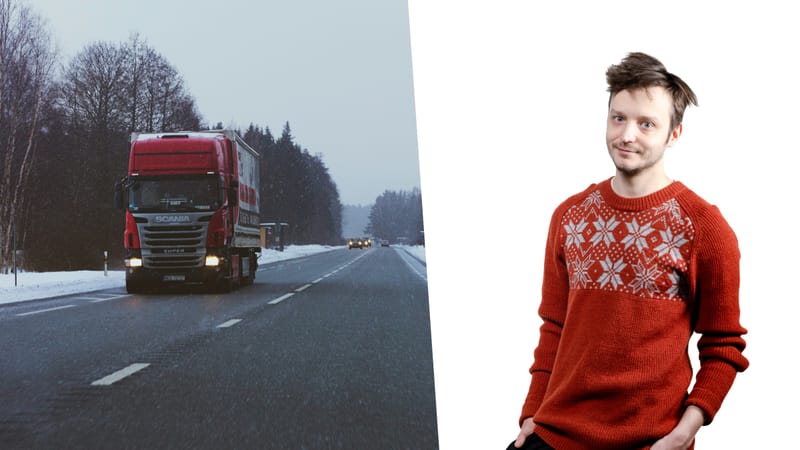For the Taiwanese in Finland, quality of life outweighs quality of worklife
Immigration from Asia to Finland has surged in recent years. Many arrive to study or work, drawn by Finland’s reputation for quality of life. But what they often find is disappointment: Finland may be a good place to live, but it is not always a good place to build a career.

Kalle Pusa
According to a report by the Research Institute of the Finnish Economy (ETLA), the number of immigrants arriving from Asia has already surpassed the number arriving from Eastern Europe. In 2024, 57 percent of immigrants to Finland came from Asia, compared with just 33 percent in 2019.
Most of these new arrivals come from India, Bangladesh, the Philippines and Sri Lanka.
Among them is also a smaller group from the island nation of Taiwan. And their numbers have been inching up year by year. In 2015, Finland issued 160 residence permits to Taiwanese citizens; today, that figure exceeds 240 annually. The trend is upward, even if the coronavirus years left a dent in the statistics.
The data also reveal that some stay long enough to gain Finnish citizenship. In 2015, not a single citizenship was granted to a Taiwanese national. In recent years, however, about ten Taiwanese have become citizens annually. That figure is comparable to the number of Icelanders, Irish and Austrians who receive Finnish citizenship each year.
Why, then, should the experiences of Taiwanese immigrants matter, when they make up such a tiny fraction of Finland’s total newcomers?
The answer lies in context: measured by GDP and purchasing power, Taiwan is wealthier than Finland. In terms of the Human Development Index, Finland leads Taiwan – but not by much.
In other words, Taiwanese migrants in Finland are often people with options. Many countries would open their doors to them, but they have chosen Finland. By listening to their experiences, we can learn what exactly drew them here.
Their stories also highlight a deeper problem Finland faces: its weak ability to attract and retain highly skilled immigrants.
Since the 1970s, it has been clear that Finland is aging at breakneck speed. The country has one of the most difficult demographic pyramids in the world – though it has not resembled a pyramid in decades. Finland’s population structure now looks more like a plump skewer of kebab meat.

Put bluntly, nearly all of Finland’s looming economic challenges stem from this demographic imbalance. The elderly require more care, while the number of working-age people shrinks.
Economists call this the weakening dependency ratio. The solutions are stark: sharply raise the birth rate, or bring in more taxpayers from abroad. No country has successfully engineered a significant increase in fertility, making that path a risky bet.
Which leaves immigration. According to ETLA, Finland would need three times as many immigrants as it currently receives in order to keep the working-age population stable. This assessment has been acknowledged not only by experts, but by nearly every political party in Parliament.
Finland is not alone in facing a demographic crunch, but it is ahead of many other countries in the pace of the problem. Across Europe – and especially in other Nordic nations – the same challenge looms.
Measured by OECD indicators, Finland is actually more attractive to migrants than the global average. The OECD assesses income levels, inclusion, quality of life and future prospects. Finland earns high marks overall.
But the real issue is that Finland’s Nordic neighbors score even higher. Outperforming Eastern Europe does not help much if highly educated migrants choose Stockholm, Copenhagen or Oslo instead of Helsinki.
Verde Media interviewed three Taiwanese friends who all arrived in Finland around the late 2010s, when migration from Taiwan began to pick up.
They came with enthusiasm but encountered the same challenges and frustrations. Their stories reveal what exactly is broken in Finland’s system.
For Finland, it would be ideal if people moved here because they wanted to – not because they were forced to go somewhere, anywhere.
All three interviewees expressed affection for Finland and a desire to live and work here. But Finland, in their eyes, has failed to hold on to them. Life has been, at times, a struggle that seemed unnecessary.
Of the three, one plans to stay, one is undecided, and one has already left.
70 applications, zero job offers

Ansin Lau, a Taiwanese designer, will always remember the date: August 6. That was the day he first left the metropolis of Taipei and arrived in Helsinki to study.
“I arrived in the middle of summer. So peaceful – that was the first thing I thought. And so green. Helsinki was a serene and quiet city surrounded by nature,” Lau recalled.
“Taipei is ten times bigger than Helsinki. Chaotic, vibrant, crowded. Here I thought, why does Helsinki even need traffic lights?”
Lau had come to pursue a master’s degree in design at Aalto University. He chose Aalto even though he had also been admitted to prestigious New York University, to Delft University of Technology in the Netherlands, and to the University of Gothenburg.
Soon he realized he had made the right choice. He found himself thriving in Finland’s tranquility.
“There is harmony in Finland,” he said. “Maybe Finns don’t always see it, but there is a peaceful kind of beauty here.”
Lau enjoyed his time at Aalto, completed his degree quickly, built networks, and immersed himself in Finnish life. He planned to stay longer. The country suited him well. After graduation, the next step was finding a job.
That was where he hit a wall. Despite his strong language skills, high-level education, and professional versatility, Lau could not secure employment in Finland.
Part of the struggle was tied to the chaos of the pandemic years. He had returned to Taiwan, from where he applied for Finnish jobs.
“Covid really disrupted my plans,” Lau said. “I couldn’t tell employers that I was living in Finland.”
“I sent applications to 70 positions, made it to a few interviews, but never got an offer.”
On a friend’s advice, Lau expanded his search. He applied not only in Finland but also in Norway. Finland remained his first choice, but he was willing to consider other Nordic countries. What mattered most was simply getting back to the North.
“In Norway I applied to four jobs – and now I’m here,” Lau said over a video call from Oslo, his new hometown.
Lau suspects that Finnish companies are extremely cautious about hiring foreigners. The labor market in Finland is not especially international, and only a few firms have real experience employing non-Finns.
At the time, Lau no longer had a Finnish work permit, since he had returned to Taiwan, and that only complicated matters further.
“Employers are probably scared off by the waiting time for work permits and the bureaucracy involved,” he said. “And especially small companies – they may not even know how the process works, so they don’t want to bother interviewing at all.”
Lau has now lived in Norway for three years. He has obtained permanent residency and even purchased an apartment. For a highly educated, multilingual professional, things fell into place fairly easily.
Norway’s job market has given him the chance to plan his future with more stability. He also found it easier to integrate into Norwegian life.
“I have Norwegian friends, and I feel it’s easier to get into Norwegian circles than into Finnish ones,” Lau said.
“My first impressions of the Norwegians was that they are friendly and smile all the time. They constantly greet each other with big, wide smiles”,
However, the smiles and happiness might have been because Lau arrived in the spring.
“I arrived in late April, at the moment every Norwegian looked so happy. In the wintertime, Norway also looks quite unhappy”, Lau admits.
Lau is content in Norway, but he still longs for Finland. At first he thought it was just the magic of summer that charmed him, so he decided to test himself.
“I visited Finland five times in different seasons. I wanted to validate my feelings – to be sure I truly liked it. And each time, I found myself enjoying the country and its calm. The experiment worked, I suppose. It’s always so quiet, and Helsinki is beautiful,” Lau said.

The dream of returning to Finland remains, but it grows dimmer with each passing year. Lau has accepted that he may never again live in Helsinki.
“The window to return closes a little more every year. I was 28 when I applied for jobs in Finland, and now I’m 32. If I don’t return in the next few years, I don’t think I ever will,” he said.
Though Lau enjoys life in the Nordics, his ultimate plan is to go back to Taiwan. He has also considered settling permanently in Norway, but admits the idea feels unlikely.
“I’m too lazy to be a first-generation immigrant,” he said with a laugh.
"The system assumes we all work in restaurants"
For another Taipei native, Vickie Weng, her first job in Finland was on an icebreaker in the Gulf of Bothnia, up in Lapland. Her role was to guide Chinese tourist groups around the vessel.
“It was actually quite a wonderful experience. I was lucky to find a good position. I know it doesn’t always go that way in Lapland, where foreign workers sometimes end up exploited,” she said.
Weng is a classically trained violinist who came to Finland for love. She moved to Helsinki to live with her husband. It took a few months for her to secure a work permit, after which she began actively searching for jobs. She never assumed she would find work in music, but thought her bachelor’s degree might still be an asset.
Finding employment turned out to be far more difficult than she had expected. Applications went unanswered; no interviews were offered. Weng held a spousal visa, so she was not under immediate pressure to work, but she wanted to.
These were the years just before the pandemic, when knowledge of Chinese was in demand. That skill led Weng into seasonal tourism work aboard the icebreaker.
From there, the path wound to a luxury handbag shop and eventually to office work.
Today Weng works in sales and marketing for a Finnish software company. She is a Finnish citizen and feels settled in the country.
But integration into Finnish society required years of struggle – and enormous initiative on her own part. The Finnish immigration system is not designed for people like Weng: educated, multilingual newcomers.
This became painfully clear to her during integration courses. She felt she was being forced into a mold that did not fit.
“The system assumes that we will all end up working in restaurants. In class, they told us about the PAM trade union and working conditions in the service sector. That wasn’t the career path I was looking for,” Weng said.
The language courses were no better. Weng wanted to learn Finnish for the workplace, but classes started from absolute basics.
“There were students who knew hardly any languages at all. Some didn’t even speak English. So we had to start from the alphabet,” she said.
Later, Weng worked with Shortcut, an organization that helps highly educated immigrants in Finland. There it became clear that the system fails to recognize the diversity of people’s backgrounds.
“Integration programs are not interested in individuals. They don’t care about anyone’s personal plan, because they think they have a better one: learn Finnish and get a job in a daycare, as a bus driver, or as a cleaner. This frustrates highly educated immigrants.”
Weng has noticed that underemployment is a widespread issue. Her well-educated friends often work in positions far below their qualifications, some in outright menial jobs.
“I know an art curator who works in a noodle restaurant,” she said.
Her own path eased only once she accumulated job experience and, through it, built networks. Over time, she blended into Finnish life.
“The first time I went to a Finnish friend’s summer cottage, I felt I was finally part of this society.”
Weng has now lived in Finland for nine years. She is married and has no plans to return to Taiwan. She believes Finland is a wonderful country, and one worth the struggles she endured.
Or at least, it was. These days, she senses a shift in the air.
“I don’t like this ever-growing right-wing atmosphere. I live here, I work here, I’ve even bought an apartment. Yet many people think I’m here stealing Kela benefits,” Weng said, referring to Finland’s social security system.
The tightening of immigration policies by the current government feels unequivocally harsh.
“Even though I’m already a citizen, it still felt really bad when the requirements for citizenship were raised. It felt unreasonable. Maybe Finns should realize: we don’t have to come here. We can go elsewhere, too.”
Still, Weng has much good to say about Finland. That is why she has stayed and put down roots. Finland allows her to be herself, to be free.
“I like the equality between genders and the sense of personal space. Not only physical space, but mental space. Finns don’t judge each other for how they live their lives. Here you can study for a new career even at 35. Here you can always change your plan.”
"For a Taiwanese, northern Europe is a place that’s very far north and very cold"

After graduating, industrial designer, arts master, and interior designer Tien Yi-Chiao’s first job in Finland was at a bubble tea kiosk in Helsinki. At least this way, she could meet the work requirements for her residence permit.
“I got a work contract I could show to the immigration authorities. I needed it, because the system values stability, even if it meant underemployment,” Tien explained.
Tien wanted to stay in Finland after graduation. She had come to study design and had found she truly enjoyed living in the country.
The young woman had studied industrial design in Taiwan and attended a summer course in Denmark, where the class made a study trip to Finland. She was captivated by Alvar Aalto’s architecture and Finnish design.
A few years later, she herself was studying at Aalto University. Coming to Finland had not been an obvious choice. According to Tien, most Taiwanese know very little about the country.
“For Taiwanese people, Northern Europe is one place that’s up north and very cold. In Chinese, the names Finland and the Netherlands don’t differ much, so even years after I moved here, my Taiwanese friends still ask me how life is in the Netherlands,” Tien said.
“I arrived in the summer, and in summer, Finland is a dreamland,” she laughs.
When Tien first arrived, she wondered where everyone was – Helsinki felt deserted. At that time, the design department was located in Arabia, on the outskirts of the city. Tien felt like she was living in the middle of a forest.
She enjoyed her studies at Aalto University and her life in the north. But after graduating, she realized – like so many other highly educated immigrants– that Finland is easy to visit, but harder to stay in.
Especially for those with higher education.
“A highly educated foreigner easily falls through the cracks of the system. Employment services are aimed at a different type of immigrant,” she said.
At times, Finland felt like a family to which she did not belong. She has not experienced direct racism, but occasionally, she is reminded that she is not native Finnish.
“It’s often subtle, but it does happen,” Tien explained.
One example she cites is design competitions she participated in actively during her studies. The contests were open to international entrants, but the winners’ lists often only featured Finnish names.
When this repeated itself over and over, it was hard to believe it was just a coincidence.
One case remained particularly vivid in Tien’s memory. She had entered a competition where the first prize was 1,500 euros. Tien won the competition but while she was on stage to receive the grand award it was announced that all three finalists were of high quality, so the money would be split amongst them.
Tien was the only finalist of foreign background.
“On my award certificate the 1,500 amount was crossed out in red marker and replaced with 500 euros by hand. It could be a coincidence,” Tien said. “But experiences like that make me feel like I’m not part of Finland.”
Today, Tien works as an entrepreneur, both as a designer and an interior designer. Her work is rewarding, though financially uncertain. One relief is that she obtained Finnish citizenship in March of 2025, after waiting two years for the immigration process.
Getting citizenship required learning the language – a challenge she embraced, being genuinely interested in Finnish.
Having citizenship makes it easier to plan for the future.
Yet the process of obtaining it was complicated. Tien realized clearly that the system expects stable income, regardless of its source.
“I would have gotten citizenship much more easily if I had just stayed selling bubble tea,” she said.
Now, as an entrepreneur, life rolls along day by day. Tien lives one day at a time but remains optimistic about the future. It is only as an entrepreneur that she truly understood how small a country – and market– Finland really is.
“It would be much easier for me to move back to Taiwan. There are so many more people there,” she said.
The thought of returning occasionally crosses her mind. Going back to Taiwan would clearly be the easier path, she realizes when speaking with friends still living there.
“My friends in Taiwan now work in responsible positions. Meanwhile, I work as an entrepreneur in uncertainty, trying to find work here and there. The difference between our career paths is huge,” Tien said.
Yet she would prefer to stay.
“If I didn’t have to worry about money, I would never return to Taiwan. I don’t want to go back; I feel like I belong in Finland,” she said.
Finland’s nature, tranquility, and culture suit Tien. Although paying bills can sometimes be challenging, everyday life is serene and pleasant.
“I’m glad I moved to Finland. It was a decision made by a young person, but I’m happy I did it,” Tien said.
Finland Attracts With Quality of Life, Not Work Opportunities
The experiences of the three interviewees about Finland’s appeal align closely with OECD research. Finland has strong higher education institutions and a very high quality of life. People do enjoy living here. Yet indicators show Finland’s attractiveness suffers due to weak prospects for immigrants and a lack of inclusion.
The previously mentioned high overall rating for Finland’s appeal is largely based on quality of life, including factors such as family life being pleasant.
Yet these high scores mask concrete problems Finland faces: it does little good that Finland is a good place to start a family if many never reach that life stage because of precarious short-term jobs and uncertain residence permits.
Those who stayed in Finland have all experienced these challenges. They persisted and thus stayed. But compared with their peers, they were almost exceptions. Each interviewee knew many others who left either for Taiwan or for another European country where life might be easier.
Like Ansin Lau.
People have left for Norway, Denmark, Sweden, or the Netherlands. Highly educated immigrants often have alternatives.
And there are countries more attractive than Finland.
Not everyone plans to stay forever
When discussing immigration, it’s crucial to remember that behind every statistic is an individual – a human life. Therefore, the assumption that immigrants would remain permanently in Finland, never returning home, is inherently problematic.
The fact that the labor market fails to provide employment opportunities is a systemic failure.
The fact that an immigrant returns home, however, is not.
Ansin Lau never planned to move to Finland permanently. His journey to the Nordics was always meant as an educational trip.
“My professor in Taipei told me that many young Taiwanese head to the U.S., the U.K., or Central Europe. Fewer go to the Nordics. He said I should come here to learn and bring back what I learned to my home country.”
This also highlights the leveling tendency of the Finnish system. Not all immigrants plan to stay permanently. For some, it’s just part of their life story – a study trip, an adventure.
In this, they are no different from countless people who have traveled the world to learn and bring knowledge back home. Finnish people did the same in the past when they went to Sweden, the U.S., France, Germany, and the U.K. to study and work.
Yet when foreigners work or study in Finland, they pay taxes, bring new perspectives critical for economic growth, and form friendships.
Investing in international higher education is wasted, however, if Finland cannot also provide an international labor market.
Or, well, not entirely wasted.
When Lau eventually returns to the bustle of Taipei, he will carry all these years in the Nordics with him.
“I went abroad because I wanted to gain knowledge and return to build Taiwan. I wanted to see how the Nordic welfare states we admire actually work. Now I think I can claim to understand them,” Lau said.
This too is a benefit for Finland: that there are people around the world who remember its peace, quiet, and greenery. People who remember what Helsinki looked like in early summer – and can tell others who may want to see it for themselves.





